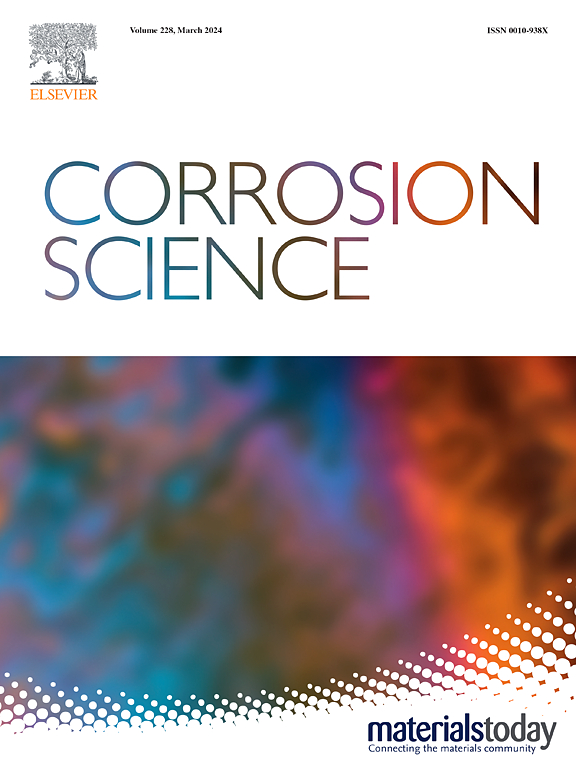利用打开的碳纳米管将Na2MoO4掺入大块金属中,显著抑制了铝合金的电偶腐蚀
IF 7.4
1区 材料科学
Q1 MATERIALS SCIENCE, MULTIDISCIPLINARY
引用次数: 0
摘要
本研究旨在通过一种新的策略,即利用开放的碳纳米管(CNTs)的内腔将Na2MoO4加入大块金属中,从而显著且可持续地抑制电偶腐蚀。作为概念验证,将Na2MoO4掺入7075铝合金中制备了Na2MoO4@CNT/7075复合材料。结果表明:当复合材料与不锈钢、碳钢、钛、铜、锌、镁等6种金属偶联时,电偶电流密度均小于10 nA cm−2,而传统7075铝合金则发生严重的电偶腐蚀。这种对电偶腐蚀的显著抑制是由于形成了一种阻碍电子传输的高电阻非导电表面膜。此外,由于暴露的打开的CNTs随需自释放Na2MoO4,该膜在反复刮擦后自愈,这使得电偶腐蚀的抑制不仅显著而且可持续。本文章由计算机程序翻译,如有差异,请以英文原文为准。
Significantly suppressing galvanic corrosion of aluminum alloy by a strategy of incorporating Na2MoO4 into bulk metals using opened carbon nanotubes
This study aims to significantly and sustainably suppress galvanic corrosion by a new strategy of incorporating Na2MoO4 into bulk metals using the inner cavity of opened carbon nanotubes (CNTs). As a proof of concept, a Na2MoO4@CNT/7075 composite is prepared by incorporating Na2MoO4 into a 7075 Al alloy. The results show that the galvanic current density is always lower than 10 nA cm−2 when the composite is coupled with any of other six kinds of metals, including stainless steel, carbon steel, titanium, copper, zinc and magnesium, while severe galvanic corrosion occurs for the conventional 7075 Al alloy. This significant suppression of galvanic corrosion results from the formation of a high-resistance non-conducting surface film impeding electron transmission. Moreover, this film is self-healing after repeated scratching due to the on-demand self-release of Na2MoO4 from exposed opened CNTs, which makes the suppression of galvanic corrosion not only significant but also sustainable.
求助全文
通过发布文献求助,成功后即可免费获取论文全文。
去求助
来源期刊

Corrosion Science
工程技术-材料科学:综合
CiteScore
13.60
自引率
18.10%
发文量
763
审稿时长
46 days
期刊介绍:
Corrosion occurrence and its practical control encompass a vast array of scientific knowledge. Corrosion Science endeavors to serve as the conduit for the exchange of ideas, developments, and research across all facets of this field, encompassing both metallic and non-metallic corrosion. The scope of this international journal is broad and inclusive. Published papers span from highly theoretical inquiries to essentially practical applications, covering diverse areas such as high-temperature oxidation, passivity, anodic oxidation, biochemical corrosion, stress corrosion cracking, and corrosion control mechanisms and methodologies.
This journal publishes original papers and critical reviews across the spectrum of pure and applied corrosion, material degradation, and surface science and engineering. It serves as a crucial link connecting metallurgists, materials scientists, and researchers investigating corrosion and degradation phenomena. Join us in advancing knowledge and understanding in the vital field of corrosion science.
 求助内容:
求助内容: 应助结果提醒方式:
应助结果提醒方式:


